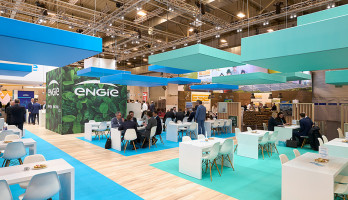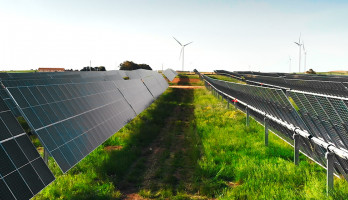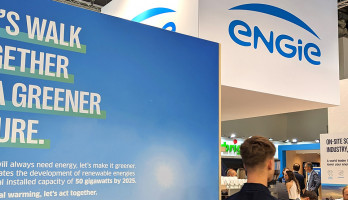
Success factors for tenant electricity - plenty of potential for accelerated expansion
Photovoltaics are booming: Around 1.8 million building owners already have a solar thermal system on their roof and are actively contributing to the energy transition. The development potential for tenant power projects is considered to be similarly high. Up to 3.8 million homes could be supplied with low-cost and environmentally-friendly tenants electricity in the coming years, according to a study commissioned by the Federal Ministry for Economic Affairs and Energy (BMWi).
In reality, however, it is still too early to speak of such comprehensive coverage. For example, various surveys show that tenant electricity from photovoltaics or combined heat and power plants is currently used in less than 50,000 households. Nevertheless, many experts and associations see good chances of bringing the energy transition to cities via tenant electricity projects. They identify various requirements and success factors to which an accelerated expansion is linked.
Tenant Power Act cannot meet expectations
In 2017, the Bundestag passed the Tenant Power Act in order to involve tenants more in the expansion of renewable energies. State support for tenant electricity from photovoltaics should be used to provide incentives to allow a significant expansion of solar installations on residential buildings. So far, however, state support has not yet proved to be a success factor for tenants. The Federal Government's Tenant Power Report published in autumn 2019 makes it clear: So far, the model has fallen far short of expectations and the current framework conditions are not sufficient to tap into the existing potentials.
New regulation of state support needed
Critics of the current Tenant Power Act criticize above all the complex framework conditions and restrictive regulations, which are often perceived in practice as a barrier. For example, the law provides for subsidies only for solar systems with a maximum rated output of 100 kilowatts. Until now, commercial buildings have also been exempted from the remuneration.
Another point of criticism is that the spatial context of projects has not yet been clearly defined, while at the same time preventing extensive solutions. In order to further exploit the potential, tenant power projects could, for example, supply entire quarters by using the public power grid. So far, the guidelines have put a stop to this. Other levers are identified by experts, for example, in the reduction of the approval period from six to two months or in the reduction of tax barriers for landlords.
Increasing the tenant electricity premium reduces the consumption costs
The main point of criticism of environmental and consumer associations about the current legal regulation is the unequal promotion of own power and tenant electricity consumption. While the owner's own consumption of solar power is completely exempted from the EEG-surcharge for larger installations, users of tenant electricity currently have to pay the full surcharge of around 6.4 cents per kilowatt hour. In return, the consumption of tenant electricity via the tenant premium is currently only subsidized at 1.0 to 2.1 cents per kilowatt hour.
As a key success factor for tenant electricity, the associations therefore call for an alignment of the tenant electricity premium with the EEG premium in order to eliminate the unequal treatment of tenants and private self-suppliers. Such an adjustment, in turn, would make it possible for prices to be significantly more attractive. According to the tenant electricity start-up Solarimo, which was founded by ENGIE Deutschland, the electricity costs of tenants can currently be reduced by about 15 percent. As many consumers remain loyal to their local electricity suppliers – despite similarly high savings potential due to a change of supplier – a corresponding increase of the tenant premium is urgently needed to make a switch attractive to more consumers.
Increasing the tenant electricity premium reduces the consumption costs
The main point of criticism of environmental and consumer associations about the current legal regulation is the unequal promotion of own power and tenant electricity consumption. While the owner's own consumption of solar power is completely exempted from the EEG-surcharge for larger installations, users of tenant electricity currently have to pay the full surcharge of around 6.4 cents per kilowatt hour. In return, the consumption of tenant electricity via the tenant premium is currently only subsidized at 1.0 to 2.1 cents per kilowatt hour.
As a key success factor for tenant electricity, the associations therefore call for an alignment of the tenant electricity premium with the EEG premium in order to eliminate the unequal treatment of tenants and private self-suppliers. Such an adjustment, in turn, would make it possible for prices to be significantly more attractive. According to the tenant electricity start-up Solarimo, which was founded by ENGIE Deutschland, the electricity costs of tenants can currently be reduced by about 15 percent. As many consumers remain loyal to their local electricity suppliers – despite similarly high savings potential due to a change of supplier – a corresponding increase of the tenant electricity premium is urgently needed to make a switch attractive to more consumers.
Cooperations as a success factor for tenants
Tenant power projects have so far been particularly successful where all the players involved cooperate closely with each other. Strategic partnerships and a comprehensive network of municipal organizations, providers, project developers, housing companies and real estate owners enable a broad understanding of tenant electricity as an opportunity topic and facilitate its expansion.
Easy handling increases acceptance of tenant power projects
Another success factor lies in the simplest possible implementation of tenant power projects. Making solar power easily available for tenants – that is exactly where Solarimo comes in. The team handles all tasks from planning, financing and installation, to delivery and maintenance, right up to billing with the tenants. This holistic concept benefits tenants and landlords alike who can actively participate in the energy transition.
Alternative tenant power projects tap further potential
In addition to the generation of tenant electricity from solar energy, other sustainable energy sources and technical solutions are increasingly being used. In particular, small, decentralized combined heat and power plants enable the realization of innovative tenant electricity projects. In this case, power is supplied on site via a highly efficient natural gas cogeneration plant in the basement of the building, giving tenants an alternative approach to the energy transition. As with the Solarimo business model, a holistic support concept is also applied here, in which the complete service is taken over by ENGIE.
Our Expert










